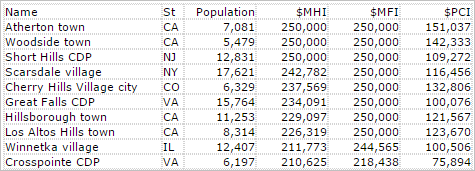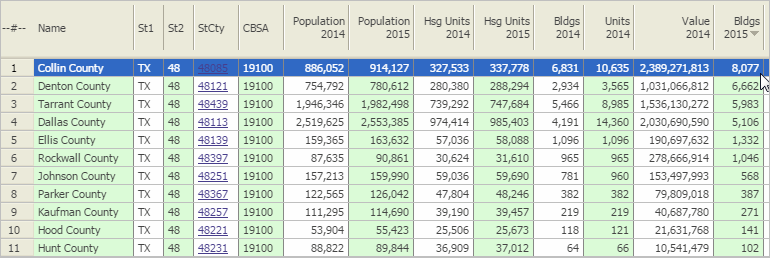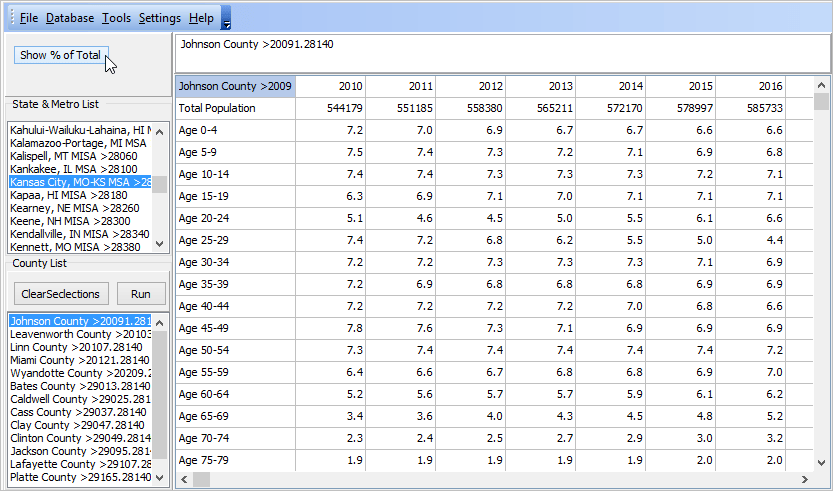.. tools and data to interactively examine demographic-economic characteristics of America’s 29,321 cities/places .. understanding demographic-economic characteristics of cities and places is essential for business development, market analysis, planning, economic development, program management and general awareness of patterns and trends. This section provides access to data and tools to examine characteristics of all cities/places in the U.S. This annual update includes data for 29,321 cities/places based on ACS 2015 data.
Accessing the Data; Using Interactive Tables
Each of the four links below opens a new page providing access to U.S. by city/place interactive tables — by type of subject matter. Use tools and usage notes below table to select operations to perform queries, sort and select columns.
• General Demographics
• Social Characteristics
• Economic Characteristics
• Housing Characteristics
How the the Tables/Data Can be Used
The following table shows data derived from the Economic Characteristics table. The top 10 cities/places having the highest median household income ($MHI) are shown. The table also shows population, median family income ($MFI) and per capita income ($PCI). The $250,000 value is a cap; the actual value is $250,000 or higher. Use the interactive tables to create similar views for states of interest. Use the button below the table to select/view cities within a selected metro. Compare attributes of cities of interest to a peer group based on population size.

Visual Analysis of City/Place Population Patterns
Use GIS resources to visually examine city/place demographic-economic patterns. The following view shows patterns of population percent change by city in the Charlotte, NC-SC metro area.

… view developed using the CV XE GIS software.
… click map for larger view and details.
Related Data
• Cities/Places Main Section
• Citie Population Estimates & Trends, 2010-15
More About Using These Data
• Using ACS 1-year and 5-year data
Join me in a Data Analytics Lab session to discuss more details about accessing and using wide-ranging demographic-economic data and data analytics. Learn more about using these data for areas and applications of interest.
About the Author
— Warren Glimpse is former senior Census Bureau statistician responsible for innovative data access and use operations. He is also the former associate director of the U.S. Office of Federal Statistical Policy and Standards for data access and use. He has more than 20 years of experience in the private sector developing data resources and tools for integration and analysis of geographic, demographic, economic and business data. Contact Warren. Join Warren on LinkedIn.














